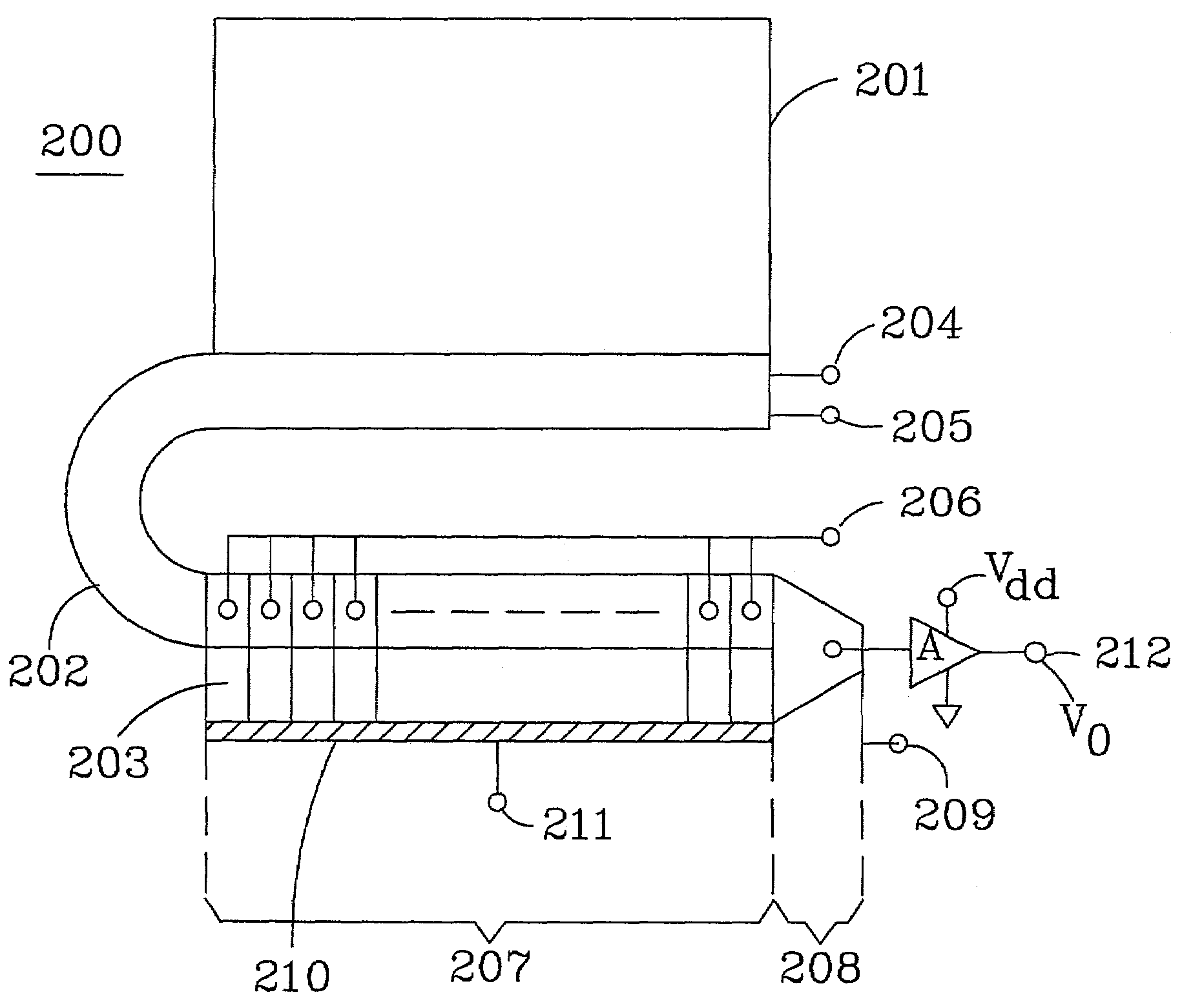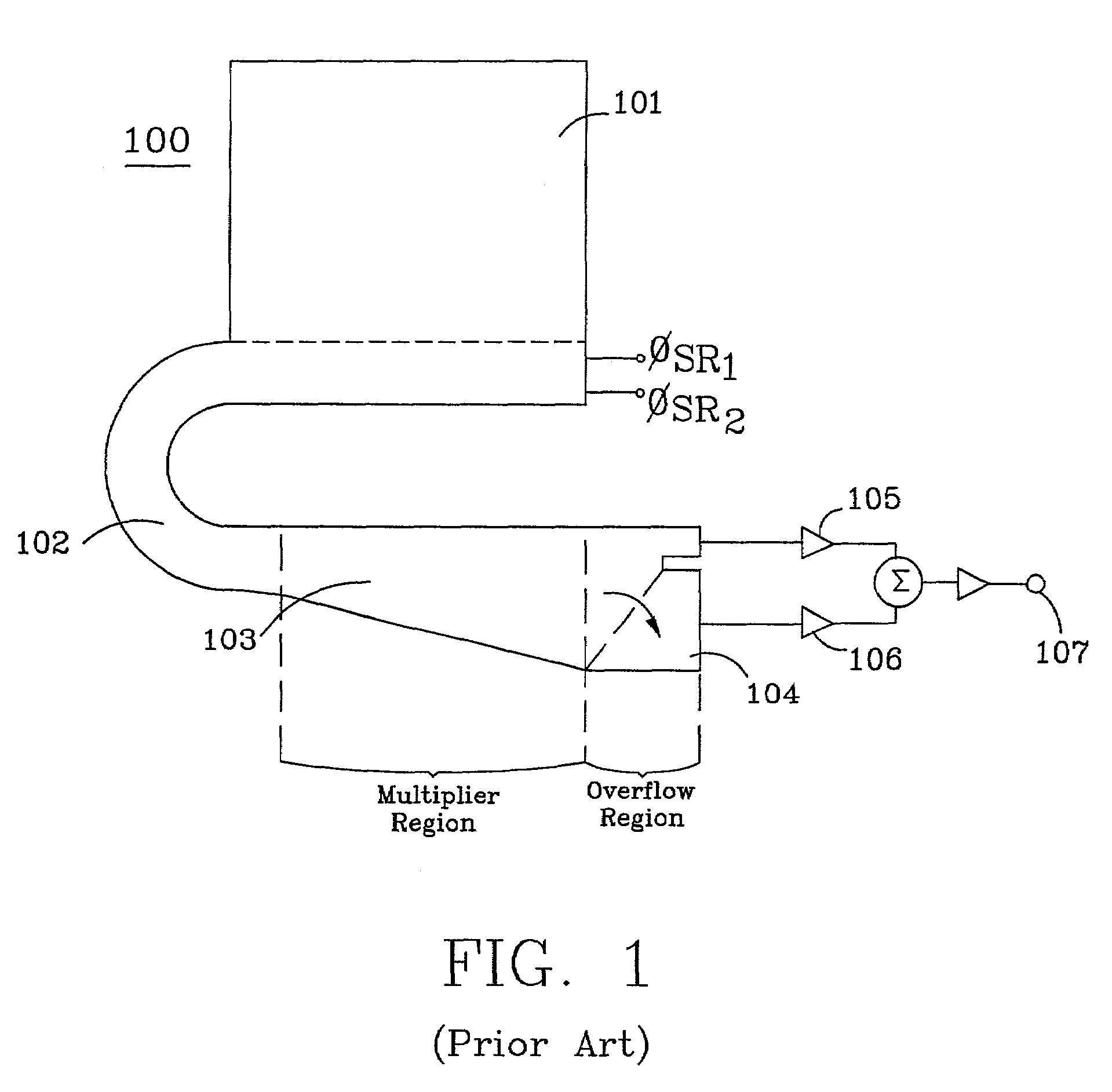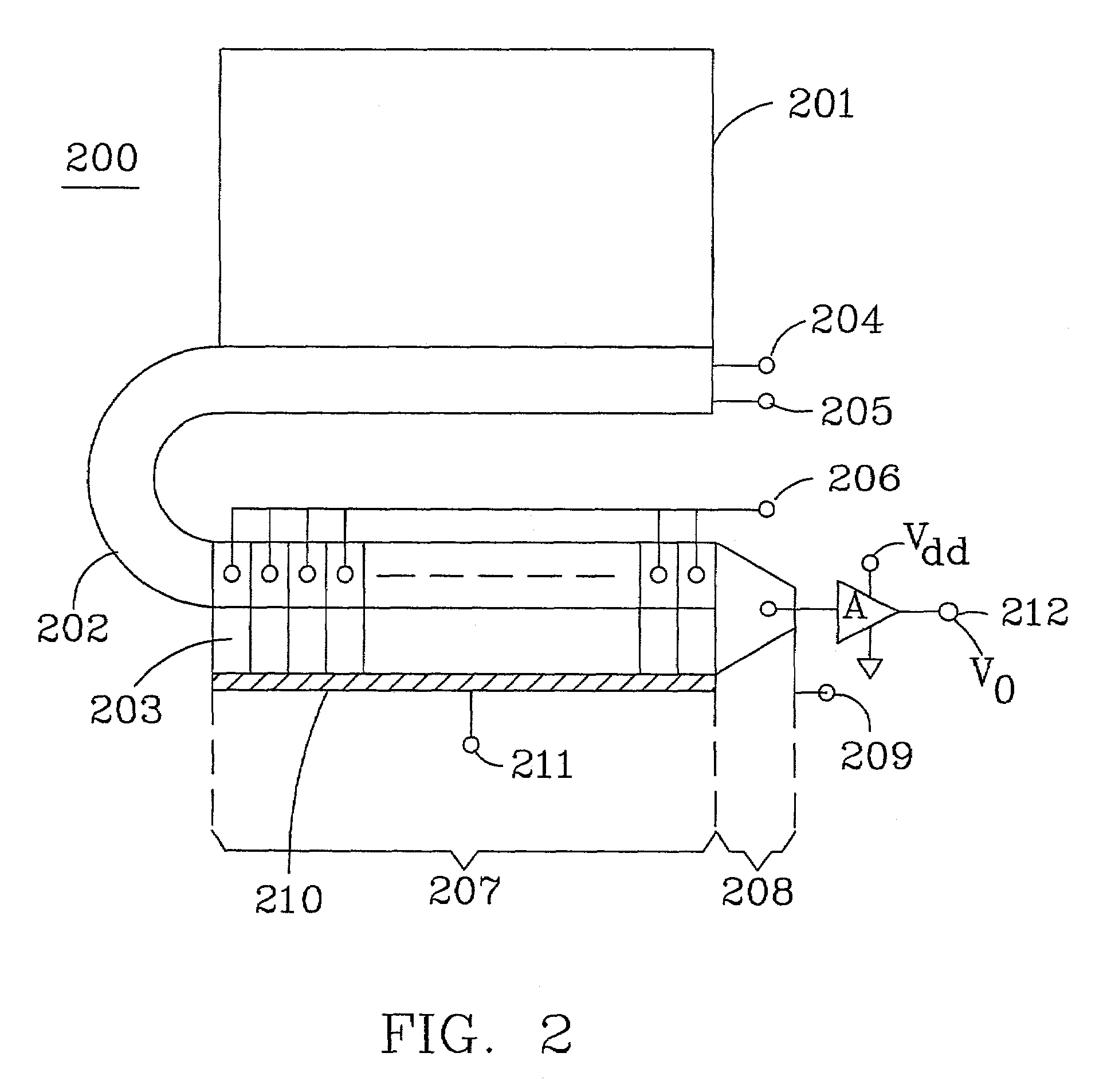Charge multiplier with logarithmic dynamic range compression implemented in charge domain
a charge domain and multiplier technology, applied in the field of solid state image sensors, can solve the problems of reducing the noise floor of the present day charge conversion amplifier, affecting the ionization, and the design of the ccd register, and achieves high dr, high charge to voltage conversion gain, and high performance
- Summary
- Abstract
- Description
- Claims
- Application Information
AI Technical Summary
Benefits of technology
Problems solved by technology
Method used
Image
Examples
Embodiment Construction
[0019]FIG. 2 shows a plan view of the CCD area image sensor 200 of the present invention. The sensor consists of an image sensing area 201 that interfaces with the extended serial register 202. Two-phase clocks applied to the terminal 204 and 205 clock serial register 202. The extended register 202 is coupled to the charge multiplication region 207 that consists of specially designed charge multiplication cells 203. The same clocks also clock this register, but additional charge multiplication gate is added that is clocked through the terminal 206. The charge multiplication region 207 essentially consists of two adjacent CCD registers coupled together in each cell by a charge overflow barrier. The charge summing and the charge detection node 208 that is reset by the reset clock applied to the terminal 209 terminates the multiplication region. The detected signal is buffered by an amplifier A, and delivered to the device output terminal 212. An antiblooming structure 210 may be inclu...
PUM
 Login to View More
Login to View More Abstract
Description
Claims
Application Information
 Login to View More
Login to View More - R&D
- Intellectual Property
- Life Sciences
- Materials
- Tech Scout
- Unparalleled Data Quality
- Higher Quality Content
- 60% Fewer Hallucinations
Browse by: Latest US Patents, China's latest patents, Technical Efficacy Thesaurus, Application Domain, Technology Topic, Popular Technical Reports.
© 2025 PatSnap. All rights reserved.Legal|Privacy policy|Modern Slavery Act Transparency Statement|Sitemap|About US| Contact US: help@patsnap.com



